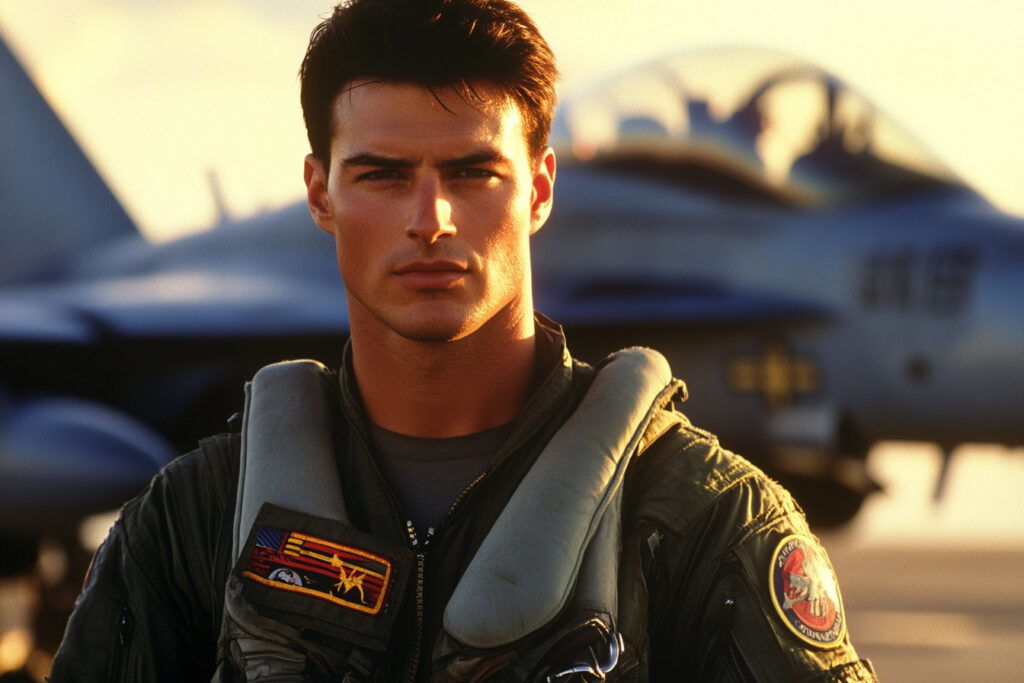
A detailed technical analysis of the steps and challenges involved in training to become a fighter pilot in the US Navy, from initial graduation to carrier qualification.
Training to become a fighter pilot in the US Navy is a long and demanding process that begins with a university degree and an officer’s commission. Candidates go through several stages, including the Aviation Preflight Indoctrination (API), where they take academic courses and undergo physical tests, before continuing their specific training on different types of aircraft. Future pilots learn to master combat aviation, aerial manoeuvres and carrier qualifications. The final selection of aircraft depends on a number of factors, including the Navy’s requirements, individual performance and candidates’ preferences.
Initial requirements: education and officer commission
Before even considering becoming a fighter pilot, candidates must meet certain academic and military requirements. The process begins with obtaining a bachelor’s degree, followed by obtaining an officer’s commission within the Navy. This commission can be obtained via several routes, including the United States Naval Academy, the Naval Reserve Officer Training Corps (NROTC) or the Officer Candidate School (OCS).
Approximately 40% of candidates come from the Naval Academy, while another 40% come from NROTC programmes. The OCS, on the other hand, is aimed at university graduates or sailors wishing to move up the ranks to become officers. This route is particularly popular with former crew members known as ‘mustangs’, who started out as enlisted sailors before becoming officers.
The process is highly competitive, as only the best are admitted to Navy training programmes. For example, the Navy Officer Aptitude Rating (OAR) is one of the tests used to assess candidates’ aptitude, covering areas such as mathematical, mechanical and spatial comprehension skills. Candidates must achieve exceptional results to hope to enter the naval aviator stream, and even more so to be selected for advanced training such as fighter pilots.
Consequences of this academic rigour
The rigour of the selection process enables the Navy to filter candidates effectively, keeping only those with the potential to undergo demanding aeronautical training. This ensures that fighter pilots are both intellectually competent and physically prepared to meet the challenges of modern military missions. The consequences of this academic and physical requirement are reflected in the high quality of the pilots trained, and their ability to adapt quickly to complex operational environments.

Aviation Preflight Indoctrination (API): physical and academic preparation
After obtaining their officer commission, future fighter pilots must complete the basic training programme called Aviation Preflight Indoctrination (API). This programme, which lasts around six weeks, takes place at the Naval Aviation Schools Command and includes a combination of theoretical courses and physical training. Among the subjects taught are aeronautical engineering, aerodynamics, aviation physiology and air navigation.
One of the most dreaded aspects of this training is sea survival training. Students are put through rigorous drills, including the famous crash simulation known as the ‘dunker’, where they have to escape from a sinking aircraft. This type of exercise prepares pilots for emergency situations they may encounter on missions.
Consequences of physical and academic demands
The IPA highlights the importance of physical and mental preparation in fighter pilot training. These exercises serve not only to test the candidates’ limits, but also to prepare them for the realities of combat missions where every second can count. The success rate on the API largely determines the progression of candidates through the next stages of training, and those who fail are often redirected to other careers within the Navy.
Primary training: mastering the basics of flying
Once they have completed the API, student pilots, or Student Naval Aviators (SNA), enter the primary training phase, which lasts around 22 weeks. This training takes place at naval air bases such as NAS Whiting Field in Florida, or NAS Corpus Christi in Texas, where the SNAs learn to fly the T-6A Texan II, a basic training aircraft. The training programme comprises several phases, including familiarisation** with the aircraft, mastery of the on-board instruments, precision aerobatics, training flights and night flights.
Flight training is supplemented by simulator sessions, giving ANSs a total of around 96 hours** of simulated flight, in addition to 160 hours** of actual flight. Primary training culminates in aircraft selection, a process in which academic performance, personal preferences and the Navy’s current requirements are taken into account.
Consequences of primary training
The aim of this phase is to ensure that all pilots master the basic skills needed to fly safely. This includes not only handling the aircraft, but also managing complex navigation and communication systems. The rigour of this training enables future pilots to deal with unforeseen situations in demanding operational environments, while preparing them for more sophisticated aircraft such as the F/A-18 Super Hornet or the F-35B/C.
Advanced training and qualification on aircraft carriers
SNAs that pass primary training and are selected for the Strikejets pipeline continue their training at bases such as NAS Kingsville in Texas or NAS Meridian in Mississippi, where they fly the T-45C Goshawk. This advanced training includes courses in weapons delivery, air combat manoeuvre, and carrier landing qualification.
One of the most complex aspects of this phase is carrier qualification, where students must complete four touch-and-go landings and ten arrested landings to achieve their Wings of Gold. This process is essential to ensure that pilots are capable of conducting missions from aircraft carriers, a key element of Navy operations.
Consequences of advanced training
This final phase is what differentiates a qualified fighter pilot from an ordinary military pilot. Carrier qualification is a rite of passage that tests not only pilots’ technical skills, but also their ability to manage stress and make quick decisions in difficult conditions. This intense training produces pilots capable of carrying out complex missions in combat environments, while reducing the risk of accidents and operational errors.
War Wings Daily is an independant magazine.